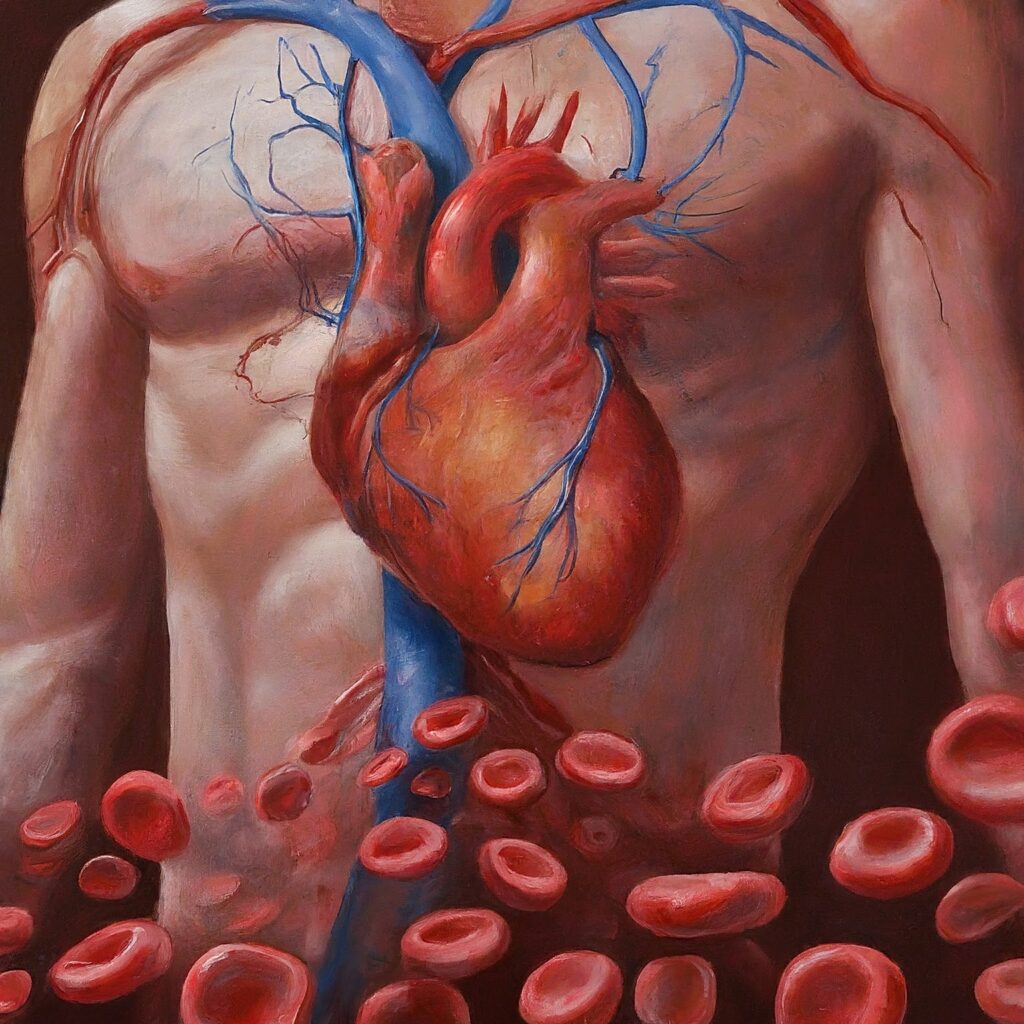Understanding Poor Blood Circulation
Poor blood circulation is a common issue that can affect various aspects of your health. When blood flow is compromised, it can lead to numerous symptoms and conditions. Recognizing the signs early can help you address the issue before it worsens. This article explores 12 signs of poor blood circulation and offers practical remedies to improve your blood flow.

1. Tingling and Numbness
One of the most noticeable signs of poor circulation is tingling or numbness in the extremities, such as your feet and hands. This occurs when blood flow to the nerves is restricted, leading to unusual sensations. Common causes include high blood sugar and lack of exercise.
Remedy: Consult with a healthcare provider to address underlying conditions. Regular exercise and managing blood sugar levels can help alleviate symptoms.
2. Swollen Feet and Legs
Swelling in the feet and legs can indicate poor circulation. When blood flow is inadequate, fluid may accumulate in the tissues, causing puffiness. Weak vein walls or valves often contribute to this problem.
Remedy: Consider supplements like red vine leaf extract and serapeptase, which help strengthen veins and improve circulation.
3. Vertical Nail Ridges
Vertical ridges on your nails can signal poor circulation. These ridges suggest that insufficient oxygen and blood are reaching the nail matrix, often due to deficiencies in iron or vitamin B12.
Remedy:Increase your intake of iron and vitamin B12-rich foods, or consult your doctor for appropriate supplements.
4. White or Blue Fingers
Fingers or toes turning white or blue, especially in cold conditions, may be a sign of Raynaud’s disease. This condition involves narrowing of the small arteries that supply blood to your skin.
Remedy: To improve circulation, consider taking benfotiamine supplements, engaging in regular exercise, and using ice water therapy.
5. High Blood Pressure
High blood pressure, with readings of 130/80 or higher, indicates that your heart is under extra strain to pump blood. This can be caused by high cortisol levels or stiff arteries.
Remedy: Natural remedies to lower blood pressure include a balanced diet, regular exercise, and monitoring your stress levels.

6. Visible Veins
Bulging or twisted veins, especially in the legs and arms, can be a sign of weakened veins. This often results from high estrogen levels or liver issues.
Remedy: Use horse chestnut supplements, exercise regularly, and consider liver cleansing practices to improve vein health.
7. Throbbing Headaches
Migraine headaches that include symptoms like sensitivity to light and sound often stem from poor circulation in the brain. Potassium deficiency can exacerbate this issue.
Remedy:Ensure adequate potassium intake through diet or supplements to help regulate blood vessel function.
8. Cold Feet or Hands
Persistent coldness in your feet or hands, even in warm environments, can result from low blood pressure or deficiencies in iron and vitamin B12.
Remedy: Consult a healthcare provider to address nutritional deficiencies and manage blood pressure.
9. Breathlessness on Stairs
Experiencing breathlessness during physical activities like climbing stairs may indicate that your heart and muscles are not receiving enough oxygen-rich blood.
Remedy: Engage in regular cardiovascular exercise and maintain a diet rich in antioxidants to support overall circulation.
10. Muscle Cramps
Muscle cramps, particularly in the legs or neck, can occur due to poor circulation, bad posture, or magnesium deficiency.
Remedy: Increase magnesium intake through supplements like magnesium glycinate or dietary sources.
11. Leg Ulcers
Leg ulcers that heal slowly or not at all are often linked to poor circulation, commonly caused by diabetes or insulin resistance.
Remedy: Manage blood sugar levels effectively and seek medical advice for proper treatment of ulcers.
12. Hair Loss
Hair thinning or loss, especially around the hairline, can result from poor blood flow to the scalp or high levels of DHT.
Remedy: Improve circulation to the scalp and consider dietary changes or supplements that support hair health.
Additional Tips for Improving Circulation

– Nattokinase Supplementation: 2,000 FU twice daily to dissolve blood clots and enhance blood flow.
– Hibiscus Tea:Drink daily to relax arteries and lower blood pressure.
– Leg Elevation: Lift legs against a wall for 15 minutes daily to support lymphatic drainage.
– Daily Walking: Engage in at least 30 minutes of walking, adjusting speed to enhance heart strength.
– Intermittent Fasting: Boost antioxidants and reduce inflammation by following an 8-hour eating window.
– Vitamin B1:Reduce cortisol levels with vitamin B1 from nutritional yeast, organic pork, and sunflower seeds.
– Niacin:Use niacin supplements to prevent cholesterol oxidation and improve blood flow.
– Potassium and Magnesium: Include these minerals in your diet through vegetables and daily salads.
– Box Breathing: Practice this stress-reducing technique for 5 minutes a day to enhance oxygen delivery and reduce blood pressure.
What to Avoid
– Emotional Stress: Minimize stress to maintain balanced hormones and blood vessels.
– Refined Carbs and Alcohol: Avoid foods and drinks that can inflame the liver and contribute to poor circulation.
– Soy Protein Isolates and Vegetable Seed Oils:Limit these to prevent liver inflammation and belly fat.